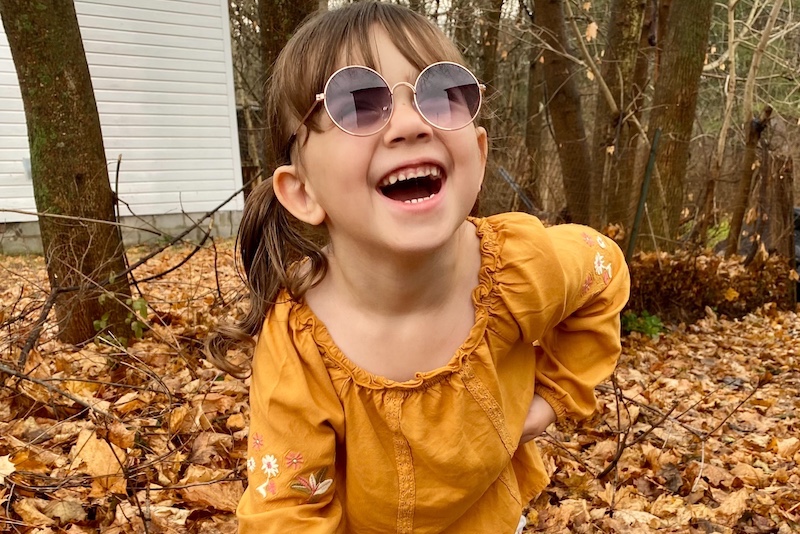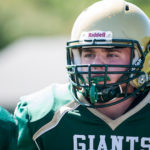Brachial plexus birth injury: Harper’s right arm

When Harper Jane Stalker was born with a limp, unmoving right arm in 2016, her parents had never heard of brachial plexus birth injury. Their situation was not unusual. Although this type of nerve injury is relatively common, most parents haven’t heard the term and don’t know what it is. “In the beginning, we were clueless,” says Harper’s mother, Amanda.
The brachial plexus is a network of nerves that start at the spinal cord and run down the shoulders into the arm and hand. These nerves can be stretched or torn during a difficult birth. Damage to the brachial plexus can interfere with movement and sensation in the affected arm. In many cases, the damaged nerves repair themselves, but a child with a severe injury may need surgery to restore function in their arm.
Harper was born in Hudson, New York and quickly transferred to a hospital in Albany. Physicians there advised her parents to bring their daughter to a specialist in brachial plexus repair. “They gave us two options,” says Amanda. “We could take her to Boston or New York City.” They chose the smaller and more approachable city, Boston.
Getting answers about brachial plexus injury

Harper and her parents made their first trip to Boston Children’s Hospital three months after her birth. There, they met Dr. Andrea Bauer, a specialist in the Brachial Plexus Program and one of a small number of orthopedic surgeons in the country with expertise in brachial plexus nerve repair. She would be able to follow Harper from infancy into adulthood, performing any procedure Harper needed to increase the mobility in her arm.
During their first visit, Dr. Bauer reassured Amanda and Justin that with treatment, Harper would not be held back by her injury as she grew up. “Dr. Bauer told us there would probably always be a noticeable difference in Harper’s right arm, but she would be able to do all the things she wanted to do,” Amanda says.
Brachial plexus injury and quality of life
When they treat children with arm or shoulder issues, surgeons in Boston Children’s Orthopedic Center have two primary goals. One is to make the limb as functional as possible. Just as importantly, they aim to help patients live full, independent lives.
To this end, Dr. Bauer and her research team are collecting information about quality of life for patients with brachial plexus birth injury. “We realize surgery is a small part of our patients’ lives,” she explains. “By looking into what’s important to our patients as they grow up, we may find new ways of helping them achieve their full potential.”
Surgery to help Harper use her arm

Harper had her first surgery when she was 6 months old. Dr. Bauer transferred healthy nerves from one part of her arm to the injured area. After four weeks in a cast, her parents saw little difference in her arm’s mobility. But under the skin, Harper’s nerves were regenerating, growing into their new location, and building new connections between the muscles and tendons in her arm and spinal cord. After a couple of months of physical therapy, Harper was reaching for toys with both hands and using her right hand to eat.
The next surgery came a year and a half later, when Harper was 2. This time, Dr. Bauer transferred tendons in Harper’s arm. “After that surgery, we saw a difference almost immediately,” says Amanda. Over three months of twice-a-week physical therapy, Harper learned to move her arm in all directions, throw a ball over head, and scratch her lower back.
With her fifth birthday coming up, Harper can use her arm to put on her own shoes and hold a plate with both hands evenly. Her parents continue to work with her on the things she can’t do, such as putting on a shirt by herself. Meanwhile she continually finds ways to adapt, holding things under her arm if she can’t grip them with her hand. As her mom says, “she does a lot of things in her own special way.”
A community of care to overcome brachial plexus injury
In addition to the brachial plexus team at Boston Children’s, Amanda and Justin have a strong network of therapists, friends, and family members at home. “We’ve surrounded ourselves with people who help Harper on a daily basis,” says Amanda. Looking back on her family’s experience, she advises parents whose children are born with a brachial plexus injury to take an active role in their child’s care.
“Don’t let this injury go untreated,” she says. “We feel extremely fortunate that we were able to get Harper the medical attention that has helped her come so far.”

Learn more about the Brachial Plexus Program.
Related Posts :
-

Answers for parents whose baby is born with brachial plexus injury
Between one and three of every 1,000 babies is born with brachial plexus birth injury. The injury, which may be minor ...
-

The mystery of Jane’s left shoulder: Acute flaccid myelitis
When 5-year-old Jane Morehead tumbled off her bike in May 2017, it didn’t seem like a big deal. Jane’s ...
-

Football and family: Overcoming brachial plexus birth palsy
Chase is only a few months away from fulfilling a lifelong dream; playing college football. It’s a dream thousands ...
-

Study: Children with upper limb differences have better emotional health
Children born with upper limb differences face unique challenges in life. Conditions can range from failure of fingers to separate ...





